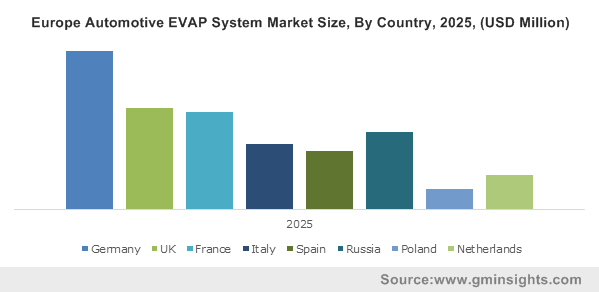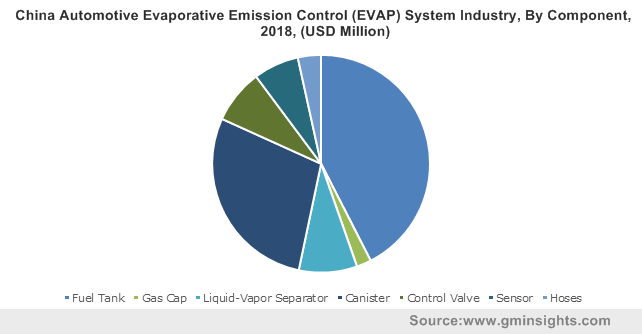Home > Automotive > Automotive Technology > Automotive Evaporative Emission Control (EVAP) System Market
Automotive Evaporative Emission Control (EVAP) System Market Analysis
- Report ID: GMI3222
- Published Date: Apr 2019
- Report Format: PDF
Automotive Evaporative Emission Control System Market Analysis
Heavy commercial vehicles will showcase significant growth over the projected timeframe owing to proliferating logistic and construction industry. High evaporative and tail pipe pollution from HCVs is encouraging the vehicle manufacturers to incorporate EVAP systems. Further, rising freight transportation demand with increasing trade activities will support the segment penetration in next six years.
In 2018, two wheelers accounted for over 35% share in the automotive evaporative emission control system market size on account of their relative affordability and higher fuel efficiency. In addition, rising two wheelers demand for personal and commercial transportation in emerging nations will drive the industry size. According to Society of Indian Automobile Manufacturers, (SIAM), in 2017, the two wheelers production increased by around 16% as compared to 2016.
Canister will account for a significant share in the automotive evaporative emission control system market size over the study timeframe. The product traps the vapours produced by the petrol evaporation contained in the fuel tank until getting soaked by the activated carbon. Component manufacturers are implementing EPDM foam in canister to enhance the adsorption efficiency for petrol. Adaption of high efficiency components in the EVAP system will drive the segment penetration over the study timeframe.
Liquid-vapor separator will exhibit a considerable growth in the automotive market share owing to its fitment to prevent petrol from entering the EVAP canister. The component enhances the canister’s capability to store fuel vapours and reduces the risk of canister overloading.
OEM holds a significant volume share in the automotive evaporative emission control system market on account of advanced technology innovation and adoption of systems to adhere to vehicular pollution standards. For instance, industry players are developing highly efficient advanced canister modules including advanced electronic controller and electrically-heated hydrocarbon scrubber, strengthening the segment share.
Aftermarket segment will witness considerable growth in the automotive EVAP system market size owing to rising incidences of defects in emission control system. In addition, emerging aftermarket in emerging nations for damaged automotive components related to evaporation emission control will accelerate the segment expansion.

Asia Pacific leads the automotive evaporative emission control system market size owing to increasing vehicles production to meet consumer demand. Rising government initiatives for reducing vehicular pollution and clean transportation will induce significant growth potential in EVAP industry. In September 2017, South Korea introduced RDE test procedure for automobiles to measure emissions from petrol fuel vehicles.
Europe will showcase over 6% CAGR in the market size owing to presence of major industry players. Ongoing initiatives by European Commission emphasizing on greenhouse gas reduction and air quality protection will further drive the product demand.

